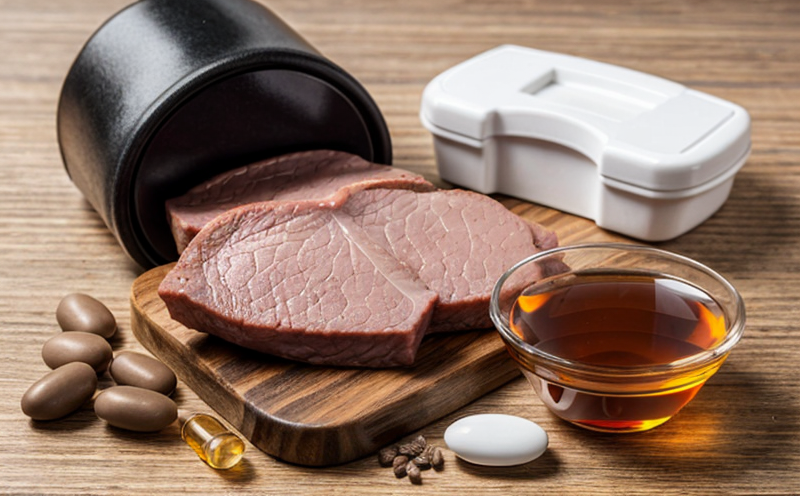Microsomal Oxidase Enzyme Testing in Animal Models
Microsomal oxidase enzyme testing is a critical component of preclinical research aimed at understanding and evaluating the hepatic metabolism of xenobiotics (foreign substances) and drugs. This service involves the use of animal models to assess the activity of microsomal enzymes, particularly cytochrome P450 (CYP), which are responsible for metabolizing over 80% of clinically used drugs.
The liver plays a pivotal role in drug metabolism through its microsomal enzyme system. Understanding how these enzymes function can provide valuable insights into potential drug-drug interactions and the efficacy of novel therapeutic agents. By studying microsomal oxidase activity in animal models, researchers can predict human response to treatment and identify potential toxicological risks.
Animal models are chosen based on their genetic similarity to humans or specific physiological characteristics that make them ideal for certain types of drug metabolism studies. Commonly used species include rats, mice, and dogs due to their availability, cost-effectiveness, and ease of handling. Each model has its advantages depending on the research question being addressed.
For accurate assessment of microsomal oxidase activity, precise specimen preparation is essential. Blood samples are typically collected from the animal models after a standardized feeding regimen. The samples are then processed to isolate hepatic tissue for enzyme extraction. Careful handling ensures that any potential artifacts do not compromise the integrity of the results.
The testing process itself involves the use of specific substrates designed to selectively react with various CYP isoforms present in the microsomal fraction. These substrates can be monitored using spectrofluorometric methods, which measure fluorescence intensity as a function of time following substrate addition. The resulting data is analyzed to determine the rate constants and turnover numbers for each isoform.
It's important to note that while animal models provide valuable insights into drug metabolism, they do not always perfectly predict human responses. Therefore, this testing service should be complemented with other translational approaches such as in vitro cell culture systems and computational modeling.
Applied Standards
| Standard Number | Title | Description |
|---|---|---|
| ISO 17025 | General Requirements for the Competence of Testing and Calibration Laboratories | This standard ensures that laboratories maintain high levels of technical competence, quality management systems, and consistent performance. |
| AAMI TPN.3-2017 | Cytosolic Drug Metabolism Assays Using Recombinant Cytochrome P450 Enzymes | This document provides guidelines for performing in vitro cytosolic drug metabolism assays, including the use of recombinant CYP enzymes. |
| ASTM E2687-19 | Standard Practice for Selection and Use of Animal Models for Drug Metabolism Studies | This practice outlines criteria for selecting appropriate animal models based on species-specific characteristics relevant to drug metabolism studies. |
Benefits
The ability to accurately measure microsomal oxidase enzyme activity in animal models offers numerous benefits:
- Prediction of human pharmacokinetics and drug-drug interactions.
- Identification of potential toxicological concerns early in the development process.
- Optimization of dosing regimens for new therapeutic agents.
- Avoidance of costly late-stage failures due to unforeseen metabolic issues.
By integrating this testing service into their R&D pipelines, pharmaceutical companies and biotech firms can enhance their ability to develop safe and effective treatments faster. Additionally, regulatory bodies rely on such data when evaluating new drug applications, ensuring compliance with international standards.
Quality and Reliability Assurance
- All personnel involved in the testing process undergo rigorous training and certification to ensure accuracy and consistency.
- The laboratory adheres strictly to Good Laboratory Practices (GLP) as outlined by international regulatory bodies.
- Regular calibration of all instrumentation ensures precise measurements every time.
- A robust quality control program is implemented, involving independent audits and proficiency testing.
These measures collectively ensure that the results produced are reliable, reproducible, and meet both internal and external quality assurance standards. This commitment to excellence translates into more accurate predictions of drug efficacy and safety profiles.





